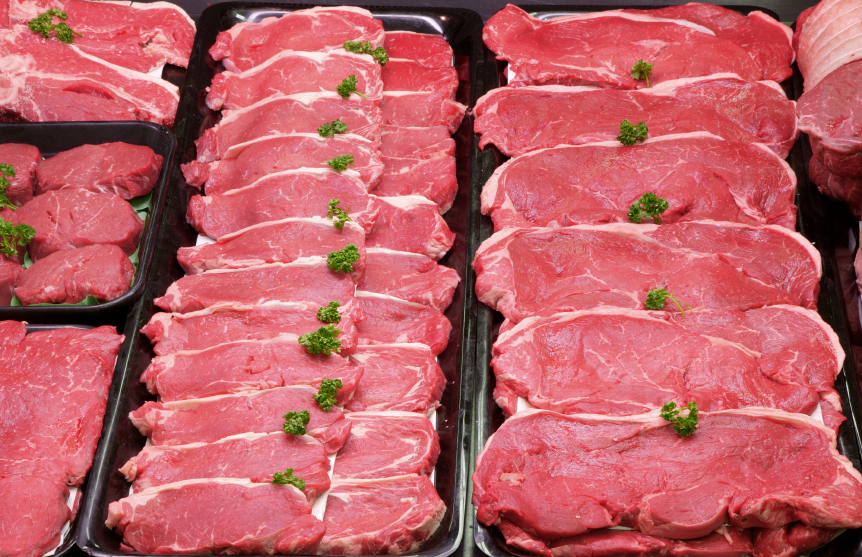
BY MTHANDAZO NYONI
THE number of cattle slaughtered in Zimbabwe decreased by 16% to 103 451 in the first half of this year compared to the same period last year, as the Covid-19 pandemic continues wreaking havoc in the country’s beef sector.
In its latest report on the beef sector, the Livestock and Meat Advisory Council (Lmac) revealed that business activity in the period under review remained subdued largely due to the outbreak of Covid-19, which disrupted the supply and marketing of cattle.
“The beef value chain has not been spared the economic shock, with restrictions resulting in logistical supply bottlenecks that have hampered the sourcing and marketing of cattle.
“Prices for meat products have remained soft under pressure from declining disposable incomes,” the report reads in part.
“Formal businesses, while adversely affected by the lockdown measures, have found some accommodation from authorities, but informal businesses, among them small-scale cattle producers, are finding little relief in the pursuit of meaningful economic activities.”
In the period under review, the highest slaughters of 18 519 head were recorded in April and the lowest slaughters of 13 958 head were recorded in May.
The average number of slaughters per month over the six-month period was 17 267 head.
- Chamisa under fire over US$120K donation
- Mavhunga puts DeMbare into Chibuku quarterfinals
- Pension funds bet on Cabora Bassa oilfields
- Councils defy govt fire tender directive
Keep Reading
Mashonaland West recorded the highest number of slaughters at monitored abattoirs, accounting for 19% (19 622 head) of the national slaughter.
Matabeleland South and Masvingo were second and third respectively, while Manicaland had the lowest number of 696 head.
Quality composition continues to be dominated by economy grade, accounting for 39% in the first half of 2020.
The proportion of super carcasses remained constant at 18% when compared to the same period last year.
Grade classification by province reveals Bulawayo as the province with the highest composition of supers accounting for a total 49%, with Harare, Matabeleland North, Masvingo, second (32%) , third (29%) and fourth (22%) respectively. Economy grade dominated slaughters in Mashonaland Central (62%), followed by Mashonaland East (51%), Mashonaland West (49%), Manicaland (47%).
Matabeleland North boasted the highest average carcass weight, averaging between 202 – 233kg.
Bulawayo was second, averaging between 204 and 271kg.
Harare recorded the lightest carcass weight of 185kg.
The national weighted average carcass ranged between 179-193kg.
The report notes that the wholesale price of super grade increased the most of all meat grades, up by 158% to $227 per kg, while the wholesale price of economy grade surged 144% to $170/kg.
Between December 2018 and May 2019, the exchange rate dominated the pricing of the meat grades, resulting in lower prices in real terms.
The report also noted that the period between June and December 2019 witnessed a correction in real terms as the United States dollar price across the board rose more than the depreciation of the local currency.
For the period between January and June 2020, the local currency depreciated by 320%.
Indexed to the US dollar, all grades retreated with super recording a 39% decline, choice (-29%), commercial (-40%), economy (-34%) and manufacturing (-57%) as consumers, hard pressed by income suppression, actively looked for cheaper protein substitutes.
Lmac also said efforts to contain the continued outbreak of diseases such as foot-and-mouth and theileriosis were being hampered by the intermittent supply of vaccines.
Private sector stakeholders have been advised to import their own vaccines, it said.
“Additionally, cattle aggregators report that since mobile money agent lines have been suspended, purchases of cattle in hard currency have increased noticeably, creating an exchange rate risk in businesses that supply formal markets that are presently denominated in the local currency,” the report reads.
“Significant balances held in agent lines at the time of suspension remain unavailable to aggregators, exposing them to inflation factors.
“Tight liquidity also exists in financial markets where institutions are only availing short-term 90-day loans that are not geared for most livestock operations.”
The central bank recently banned mobile money agent lines and set $5 000 as the cap for daily transactions for individuals.
The apex bank also introduced a policy that limits mobile wallet users to only one account per individual.
Agent lines were being used across the country to cash-in and cash-out as well as for sales transactions.











